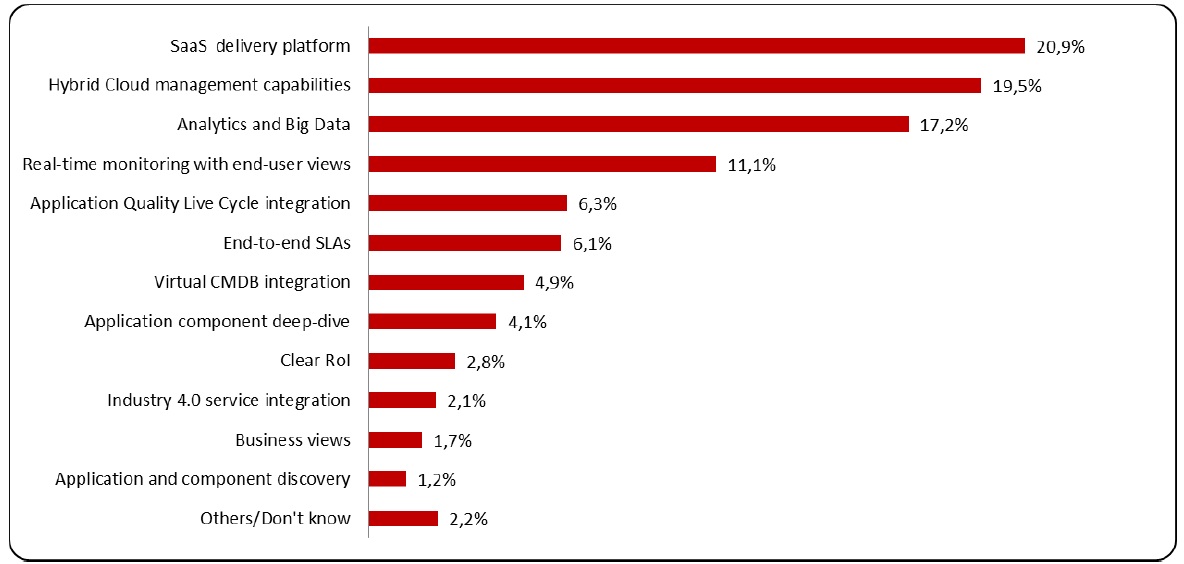The following is based on excerpts from Research In Action's Vendor Selection Matrix for Next Generation Application Performance Management.
The importance of Application Performance Management is at an all time high. This is a very dynamic market, highly complex and with many different facets. Application Performance Management solutions today have many faces and definitions, few vendors can be compared on an apples to apples basis.
There are more than 400 active software and SaaS vendors generating around $4.6 billion in annual revenue. However, the overall importance of Application Performance Management for the IT Service, Application and Operation Management space as a whole, is still growing every year. This makes it worthwhile to look ahead to see what the future will look like for the Next Generation of Application Management solutions.
The End-User Pain Points Today
■ The Cloud challenge in the extended enterprise
The Cloud phenomenon is driving investment from IT buyers to address issues in Application Performance Management around new applications in the Cloud, as well as extended real-time and Big Data requirements. More traditional challenges around N-tier Applications and instrumentation, are further exemplified by the Cloud.
■ More business orientation
DevOps is only the beginning, but already high on the agenda for 2015. As the business becomes more entrenched in Application Management as a whole, business SLAs are a key focal point for 2015 as well.
■ More integration issues than one can handle
IT decision makers are still struggling with the many areas of integration in today’s Application Performance Management implementations. Very few companies have worked this out completely.The most important integration challenges come from the areas of:
1. Cost
2. Capacity
3. BPM/BTM
4. Business process
5. The CMDB
Requirements for Next Generation APM
In a survey of 1600 IT Managers, respondents were asked: What are the key requirements for a Next Generation Application Performance Management solution? The chart below shows the results.

The Next Generation of APM Solutions
APM is a changing market with new and clearer requirements. Application Performance Management has a long history in many enterprises. Many implementations are already more than 25 years old. Vendors and IT buyers alike a struggling with updating their solution sets to accommodate the quickly changing requirements.
The Next Generation Application Performance Management solutions, however, will be based a clearer set of requirements, making it easier to implement and maintain, as well as to compare vendors.
SaaS will be the future delivery platform. SaaS will be the platform of choice for ROI conscious buyers. Next Generation Application Performance Management will be predominantly a SaaS play. SaaS is now widely accepted. While new players are already predominantly SaaS-only, established players are either revamping their solutions, or are at least offering SaaS options. A much better ROI as well as ease of deploy and upgrade are the major drivers for this.
Next Generation Application Performance Management will be more streamlined. The technical requirements for Next Generation Application Performance Management will ultimately lead to a vendor landscape that is much more comparable than the one in today’s highly fragmented market.
Dr. Thomas Mendel Ph.D. is Managing Director of Research in Action.


